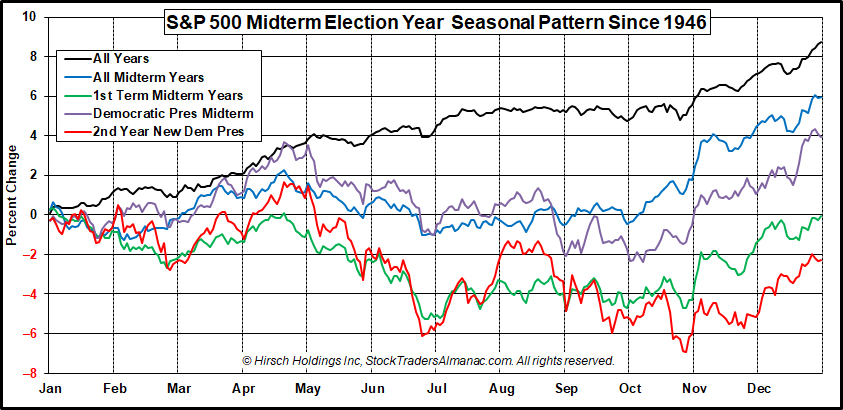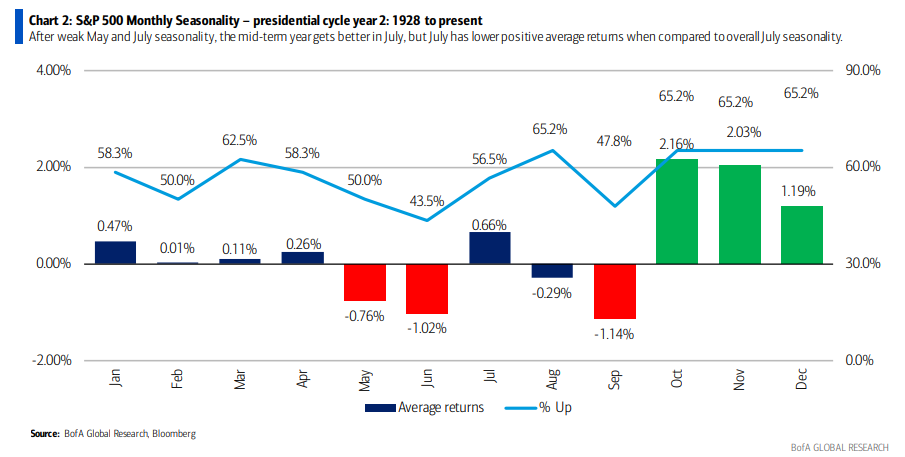This article was written exclusively for Investing.com
- H1 2022 has been among the worst on record for stock and bond markets
- More bearish and volatile times are likely
- Bulls must endure another few months before major positive seasonality takes hold
Bulls are ready to wish good riddance to the first half of 2022. Earlier this month, back when the market was near its YTD lows, the S&P 500 was off to its worst start to a year since 1932, according to Charlie Bilello at Compound Advisors.
With a rebound into month-end, some of those losses have been recouped. Still, the global aggregate bond market remains severely lower in 2022, on pace for its worst year in history, according to data from Jim Bianco.
With the second half on our doorstep and a long holiday weekend imminent, it’s an ideal time to review what seasonal trends suggest. As a technician, I concede that seasonality must always come second to price action. Right now, the S&P 500 is in a downtrend off the early January high while the broader market is arguably in a bear market dating back to February 2021. History says that more bearish action might be in the cards.
Consider that we are in a mid-term election year—notoriously a weak and volatile time for equity markets. And that has played out to an extreme in 2022. Data gathered and plotted by StockTradersAlmanac.com shows that this late June respite could be the calm before the Q3 storm. This particular mid-term year is the 2nd year of a new Democratic President, which, on average, leads to lower prices in the second half, according to Jeff Hirsch.
Seasonal Stock Market Trends Suggest More Rocky Times Through October

Source: Jeff Hirsch, Almanac Trader
July Is Typically Bullish, but Not as Strong During Mid-Term Years

Source: Bank of America Global Research
There are more great seasonal trend data (if you’re bearish) from Capital Group. The investment group dug into monthly volatility data. The CBOE VIX index hovers around the uncomfortable 30 area, well above its long-term average of the high teens.
Many market technicians have called for a volatility spike into the mid-40s to mark a definitive S&P 500 bottom. Time will tell on that, but elevated August and September volatility readings during a mid-term election year are common. Perhaps we’ll get the death knell volatility rise during that time in 2022.
Mid-Term Year Volatility Spikes Are Common in August and September

Source: Capital Group
Do all these data have you scurrying to put on short trades? I have some good news for the bulls—returns after the mid-term election tend to be extraordinarily strong. Recall that year three of the presidential election cycle is the best of the four.
Moreover, the period from election night through the following 52 weeks has never been negative for the S&P 500, per Capital Group. Of course, the two most recent instances were weak returns of just 3% and 4% in 2015 and 2019, respectively.
The Bottom Line
Seasonality is something to monitor but should not be the focus of investors. I assert it is actually more important to pay attention to seasonal price trends when the long-term norm is bucked. This year, however, market downside and volatility fit the historical narrative. Looking ahead, expect more shaky times through, say, September and mid-October. The bulls have late 2022 and next year’s typically bullish pre-election period to look forward to.
